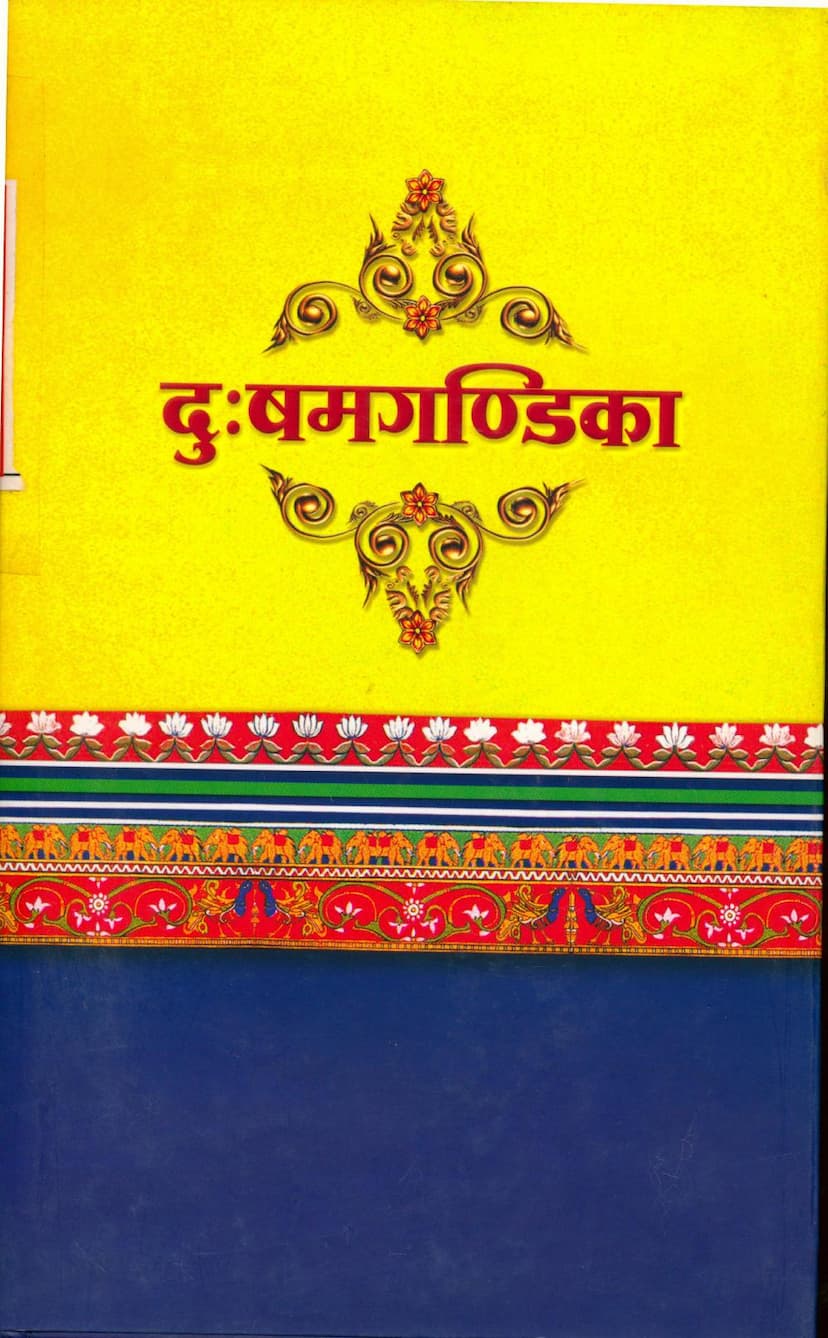Dushamgandika
Added to library: September 1, 2025

Summary
This document is a summary and analysis of the Jain text "Dushamgandika" (दुःषमगण्डिका) by Kalyanbodhisuri, published by Jinshasan Aradhana Trust. The text itself is a commentary on a work by PratiPrabh Surishwarji.
Here's a breakdown of the key information presented in the provided pages:
Core Information:
- Title: Dushamgandika (दुःषमगण्डिका)
- Author of the original work: PratiPrabh Surishwarji (प्रतिप्रभुसूरि)
- Author of the commentary and compilation: Acharya Vijay Kalyanbodhisurishwarji (आचार्य विजयकल्याणबोधिसूरीश्वरजी)
- Publisher: Shri Jinshasan Aradhana Trust (श्री जिनशासन आराधना ट्रस्ट)
- Catalog Link: https://jainqq.org/explore/022010/1
- Content: The book describes events related to the "Dusham Kala" (दुःषम काल), also known as the era of decline or suffering, within the Bharata continent of the Jain cosmology. It covers a period from the Nirvana of Lord Mahavir Swami to the origin of Lord Padmanabha Prabhu.
- Significance: This publication is significant as it is being published for the first time, based on research and editorial work from ancient manuscripts. It is considered a valuable resource for students, scholars, and historians.
- Key Features:
- Includes the original text (72 Prakrit verses).
- Features a newly created Sanskrit commentary (Dushamopanishad).
- Provides a Gujarati translation.
- Offers research and editing by Acharya Vijay Kalyanbodhisurishwarji.
- Covers important details like the eras (Yugas), historical events, various opinions, origins of texts, and changes in traditions.
- The new commentary includes narratives, witness texts, and differing opinions mentioned in the original text.
- It is considered an invaluable support for students, scholars, and historians.
- The text is intended for reading and teaching by qualified individuals.
Content Overview from the Text:
The provided pages include the beginning of the commentary, which sets the stage by explaining the Jain concept of time, particularly the Avasharpini (अवसर्पिणी) and Utsarpini (उत्सर्पिणी) periods, and the sub-periods within them (Aras). The commentary delves into:
- Definition of Dushamgandika: The term "Gandika" refers to a section or method of a text dealing with a specific subject. "Dushamgandika" refers to a text dealing with the era of Dushama (suffering/decline).
- Time Divisions: The text explains that time is divided into Avasharpini and Utsarpini, each lasting for a specific cosmic duration (described in terms of Sagaropama).
- Aras (Avasarpini): The Avasharpini period is divided into six Aras (stages), which are described in succession:
- Susham-Sushama (सुषमसुषमा)
- Sushama (सुषमा)
- Sushama-Dushama (सुषमदुषमा)
- Dushama-Sushama (दुःषमसुषमा)
- Dushama (दुःषमा)
- Dushama-Dushama (दुःषमदुःषमा)
- Duration of Aras: The commentary details the cosmic duration of each of these Aras.
- Human Lifespan and Habits: It discusses the lifespan and dietary habits of humans during the initial Aras, emphasizing their gradual decline in physical attributes and lifespan as the era progresses.
- Historical Events and Personalities: The text then begins to narrate historical events and the lives of significant figures within these declining eras, starting with:
- Lord Rishabhadeva (ऋषभजिन): The first Tirthankara, who appeared at the end of the third Ara.
- Subsequent Tirthankaras and figures: It mentions the 23 Tirthankaras from Ajita onwards, along with Chakravartins, Vasudevas, and Pratīvasudevas who appeared in the fourth Ara (Dushama-Sushama).
- Lord Mahavir Swami (वीर): His Nirvana and the subsequent period.
- Gautam Swami (गौतमस्वामी) and Sudharma Swami (सुधर्मास्वामी): Their Nirvana after Lord Mahavir.
- Jambuswami (जंबु): The last Kevali, and the loss of ten important "stations" or faculties with his Nirvana.
- Disappearance of various knowledge systems: The text traces the gradual disappearance of various aspects of Jain knowledge and practices through the succession of influential Acharyas like Sthulabhadra, Bhadrabahu, Vajraswami, Aryarakshita, Kalakacharya, etc., and their disciples.
- The role of Acharyas: It highlights the efforts of various Acharyas in preserving and transmitting Jain teachings, especially during times of decline and disruption.
- Chronological Markers: The text uses the Nirvana of Lord Mahavir and the Vikram era as chronological markers to date events.
- Specific Events: It details events like the establishment of temples, the rise and fall of dynasties, the influence of different philosophical schools, and significant events within Jain history.
- The meaning of "Dusham Kala": The narrative emphasizes the gradual deterioration of human lifespan, physical strength, intellectual capacity, and moral conduct as the Dusham Kala progresses.
Overall Impression:
The provided pages offer a glimpse into a detailed historical and cosmological narrative within Jainism. "Dushamgandika," as presented here, aims to be a comprehensive account of the declining period, tracing the gradual fading of spiritual and worldly prosperity, and the challenges faced in preserving Jain knowledge and traditions. The commentary by Kalyanbodhisuri appears to be thorough, drawing on various sources to reconstruct this historical timeline.